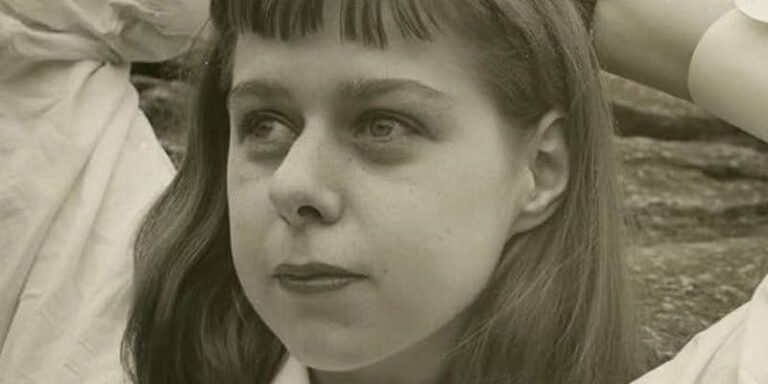
Our supergroup of sumptuous reviews this week includes Parul Sehgal on Tommy Orange’s Wandering Stars, Dwight Garner on Mary V. Dearborn’s Carson McCullers: A Life, Haley Mlotek on Leslie Jamison’s Splinters, Alexander Chee on Ed Park’s Same Bed Different Dreams, and Merve Emre on Sally Rooney’s Beautiful World, Where Are You, and Eleanor Catton’s Birnam Wood.
Brought to you by Book Marks, Lit Hub’s home for book reviews.
*
“Second novels can be gawky creatures, sulky and strained as they try to slink out of the shadows of their predecessors. Will the second novel follow the formula, or repudiate it and chance something new? Critics seem to lie lazily in wait, ready to punish either choice. More of the same, a pity. A misjudged departure, alas. Wandering Stars, calmly and cannily, has it both ways … it is a different tempo, a different ambition—almost a different writer—we encounter in Wandering Stars. Where There There shoots forward with a linear trajectory, the new novel maunders and meanders. Repetition is its organizing principle—the repetition of pain, addiction, injury. A linear story, it seems to argue, would be a lie. The narrative spirals around and envelops the previous book …
Orange is as good as Denis Johnson in describing addiction’s passage into joyless duty. But it’s not merely addiction that connects these men, these generations—so many are drawn to ritual (newly invented or otherwise), storytelling, music-making … With this expansive canvas to fill, Orange can seem perpetually out of time and out of breath. A few key characters are quick smudges, scarcely more than their signifiers—addict, nonbinary, grandmother—when, in his previous book, each character felt like a world. They sound alike, prone to parroting self-help homilies. Orange resorts to cliffhangers to stitch sections together…And he works his motifs into tatters—holes, spiders, flying, and, above all, stars…
The book appears to suffer from the same condition as its characters; it cannot see itself, cannot see that it need not hammer home every theme every time, that it speeds where it should saunter, tarries where we need to move. And yet it expands and expands—why not throw in a subplot about a suburban pill mill?—with such exuberance that even at its most sprawling and diffuse, I wondered: Is this novel flailing or dancing?”
–Parul Sehgal on Tommy Orange’s Wandering Stars (The New Yorker)
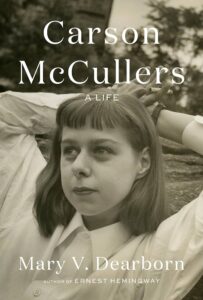
“Mary V. Dearborn’s new book, Carson McCullers: A Life, is the first major biography of this essential American writer in more than 20 years. It is competent and professional, as if built from solid pine and good plaster. It is dispassionate and well researched. Reading it is brutal because McCullers’s life was brutal to endure … Dearborn’s style is clean; we’re in a doctor’s office or a museum, and McCullers’s life is in a lighted display box … Carson McCullers: A Life is a necessary book, though. It builds on Carr’s work and considers newly released material, including letters and journals and, most tantalizingly, transcripts of McCullers’s late-life psychiatric sessions with the female doctor who would become her lover and gatekeeper …
McCullers was an eccentric. She was needy and smothering and given to extravagant language and gestures. In the short run, these things can be enormously attractive. In the long run, they can make everyone hate you. By the end of this biography, when she has fallen apart from drinking and illness, a lot of contumely is dumped on McCullers by enemies and friends alike. Her Southern accent was adorable until people began to mock it behind her back …
The second half of this book is a litany of ills, including a radical mastectomy and blood clot in her lung, that are hard to even read about. The lists of pills fill entire paragraphs. She must have rattled when she walked … These drive-by shootings are vivid material, but none of us are reducible to what others say about us. It’s to Dearborn’s credit that she also suggests McCullers’s deep humanity, her subversive talents as a writer and lonely observer, and a strong sense of what McCullers herself called ‘her sad, happy life.’”
–Dwight Garner on Mary V. Dearborn’s Carson McCullers: A Life (The New York Times)
“While Jamison’s writing is almost always personal…Splinters is her most inward book … Jamison is determinedly both the subject and the material—the stories she finds herself investigating here are her own. There are many love stories within this book: a story of love lost, of platonic love between friends, of Jamison’s love for her infant daughter. But the crux of the book is divorce—not only Jamison’s own, but the growing, irreparable rift between her experience and her writing about that experience …
Splinters is Jamison’s story—new to us—but the meaning is found precisely where it repeats something practically any adult person will recognize: a fear of what is happening within their own intimacies, a pain that emanates from their role played in breaks and endings, a fatigue of their own friendships … it’s that awareness of what writing and revision can do that protects Splinters from a callousness Jamison seems to fear. There is little cruelty in her finished work, though that’s not to say there is no pain; I winced hard at some of her recollections of how her marriage ended, and the fraught beginnings of her life as a co-parent rather than a spouse.
I could feel, in her telling, the wounds of that relationship lift off the remembered dialogue and into my own memories. I could also feel Jamison’s hurry to rediscover life in a new role—her commitment to work as a way of proving something to herself, her diligence to romance seemed of much the same stuff … Splinters is that other love story, the one in love with our dedication to yet another kind of love, and another, and another.”
–Haley Mlotek on Leslie Jamison’s Splinters (Bookforum)
“…if it is difficult to discover Korean history in America, it is as hard or harder to locate Korean American history. And so any Korean American writer writes across some enormous gulfs when describing Korean American experiences like transracial adoption, immigration, and assimilation, reverse migration, and which forms of political and social repression inside postwar Korea our families sought to escape, producing very different reasons to emigrate—and thus, very different treatments in literature.
Few Korean American fiction writers if any have described the struggle of the Korean Provisional Government, a Korean resistance effort against the Japanese occupation that set itself up in 1919, eventually becoming a government in exile in Shanghai and producing South Korea’s controversial first president, Syngman Rhee. And none that I can think of has threaded together all of this history into the world-building of their novel—the country before its division into the North and the South and after, the diaspora in the United States and also China—until now …
Park is not writing a historical novel, hoping to dramatize some episode or series of episodes in the past. He is building an alternate history of Korea and its relationship to the United States in the twentieth and twenty-first centuries, telling a story by mining and transforming the historical record. And it begins with a question that returns again and again, until it is almost like a chant in a protest: What is history?”
–Alexander Chee on Ed Park’s Same Bed Different Dreams (The New Republic)
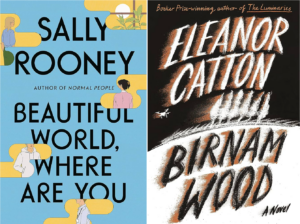
“Conversations about character and type abound in contemporary realist novels…Although most of these novels have been widely praised, they have also incited a peculiarly agitated response among many critics, who have reproached the creators of these conversations (especially Rooney) for their moral simplicity, their idle politics, their sexual naiveté, and their banal neuroses; for the slight touch of stupidity that attends their language of type, whether moral (good/bad), political (liberal/Marxist), economic (working-class/middle-class), psychological (normal/traumatized), or sexual (straight/queer); and above all for how they seem to abandon character to the social and political determinants of history, refusing to plunge into the ‘full murk of human motivation,’ as one critic writes.
The results, allegedly, are blanched, lifeless novels, characterized by minimalism of description, coolness of tone, humorlessness of style, and wobbliness of genre—not quite fact, not quite fiction … If we are in on Rooney’s joke, we realize that there is a world of difference between appealing to type didactically, to encourage morally or politically ‘good’ behavior, and appealing to it analytically…The game played by Rooney and novelists like her is a supremely intelligent critique of our discourse, not a symptom of its sanctimony. We can play it, too, by letting these novels teach us how to read them alongside the rich history of character in the realist novel.”
–Merve Emre on Sally Rooney’s Beautiful World, Where Are You, and Eleanor Catton’s Birnam Wood (The New York Review of Books)



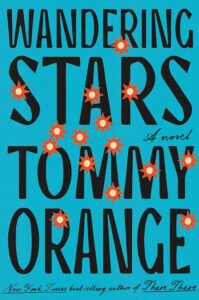
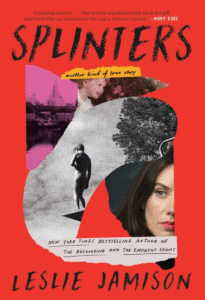
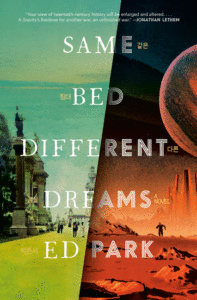







 Bengali (Bangladesh) ·
Bengali (Bangladesh) ·  English (United States) ·
English (United States) ·